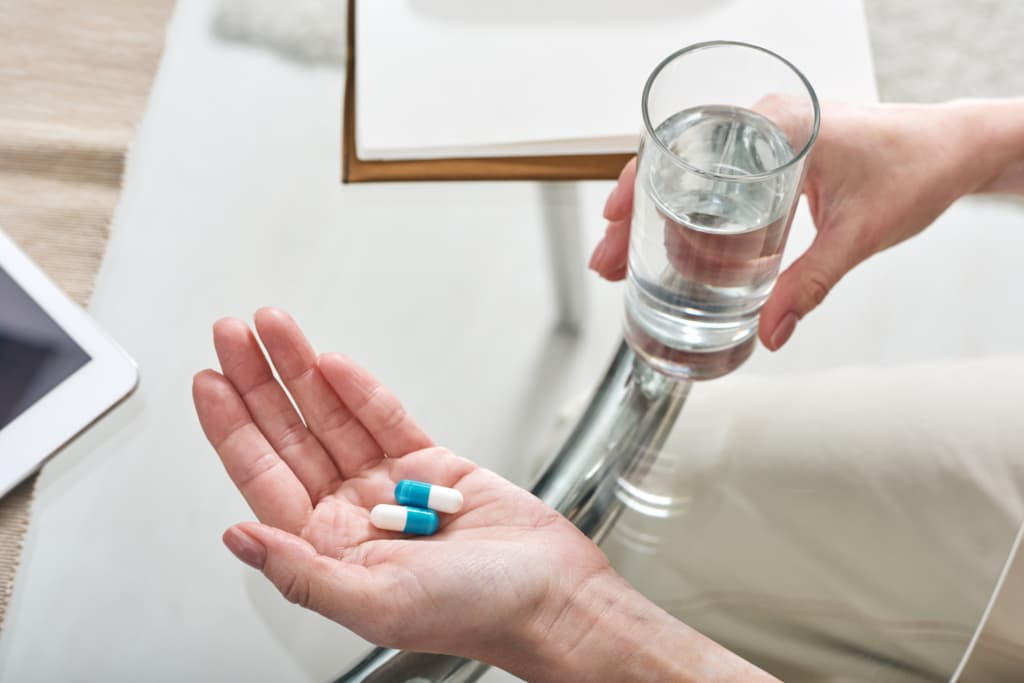Ketamine therapy creates an altered state. Patients often feel calm, detached, and introspective. The goal is treatment, not intoxication. Clinical dosing and supervision shape a controlled experience, not a party-drug “high.”

Overview: What This Guide Delivers
-
Explain the experience in factual terms.
-
Define medical use, routes, and dosing frames.
-
Separate clinical care from recreational misuse.
-
Map benefits, risks, and eligibility criteria.
-
Provide a patient journey and preparation steps.
-
Offer clinician-level detail with concise language.
-
Supply a comparison table and practical lists.
-
Answer advanced FAQs with direct statements.
Definition: Ketamine Therapy in Plain Terms
Define ketamine therapy:
Clinicians administer sub-anesthetic ketamine. The setting is supervised. The target is symptom relief. Typical targets include treatment-resistant depression, PTSD, anxiety, and certain pain states.
Define “high” in this context:
A “high” implies uncontrolled euphoria or intoxication. Medical therapy designs a measured altered state instead. The session aims for safety, insight, and functional gains.
Bottom Line: Does Ketamine Therapy Get You High?
Answer first:
Ketamine therapy produces noticeable psychoactive effects. The effects include dissociation, time distortion, and floating sensations. Many patients describe serenity or inward focus. The experience does not equal an uncontrolled recreational high. The dose, intention, and environment remain different.
Mechanism: Why the Experience Feels Different
-
Target receptor: Ketamine blocks NMDA receptors.
-
Downstream changes: Glutamate signaling increases.
-
Plasticity effects: AMPA activity rises. Synapses remodel.
-
Mood impact: Neural circuits update. Symptoms can lift.
-
Consciousness shift: Perception and self-focus change.
-
Clinical dose: Sub-anesthetic levels steer the profile.
-
Result: Alteration with boundaries, not chaotic intoxication.
Routes and Dosing Frames
-
IV infusion: Predictable onset and titration.
-
IM injection: Rapid effect with stable curve.
-
Nasal spray (esketamine formulations): Clinic-based dosing.
-
Oral lozenge/troche: Slower onset and variable exposure.
-
Sublingual tablets: Similar to oral with mucosal uptake.
Dose philosophy:
Clinicians use measured ranges. The goal is a “therapeutic window.” Patients often remain arousable and communicative. Safety monitoring supports each step.
Clinical Experience: What Patients Commonly Report
-
Perceptual change: Floating, weightlessness, time shifts.
-
Emotional change: Quiet mind, softened negative loops.
-
Cognitive change: New angles on persistent problems.
-
Somatic change: Warmth, lightness, reduced tension.
-
Inner imagery: Patterns or scenes with eyes closed.
-
Social engagement: Staff support enhances security.
Duration:
Most sessions last 40–60 minutes. After-effects taper over 1–3 hours. Clear function usually returns later the same day. Driving is typically restricted that day.
Clinical Intent vs. Recreational Use
-
Intent: Treatment goals vs. intoxication goals.
-
Dose: Sub-anesthetic vs. high unpredictable doses.
-
Setting: Monitored clinic vs. unsupervised venues.
-
Purity: Medical supply vs. unknown street products.
-
Risks: Controlled mitigation vs. elevated harm.
-
Outcome: Symptom reduction vs. fleeting euphoria.
Conclusion:
The same molecule does not mean the same outcome. Context governs the experience and the risk envelope.
Safety Protocols: How Clinics Reduce Risk
-
Screen medical history: Cardiac, renal, hepatic, and neuro.
-
Screen mental health: Psychosis, mania, and substance risk.
-
Check vitals: Blood pressure, heart rate, oxygenation.
-
Use informed consent: Scope, benefits, alternatives, limits.
-
Control environment: Quiet room, trained staff, emergency kit.
-
Observe recovery: Supervision continues after dosing.
-
Document outcomes: Track response and side-effects.
Eligibility: Who May Benefit
-
Treatment-resistant depression: Major focus area.
-
PTSD and trauma spectra: Dissociation aids reframing.
-
Generalized anxiety and social anxiety: Cognitive relief.
-
OCD adjunct care: Flexibility in entrenched loops.
-
Chronic pain subsets: Central sensitization targets.
Caution or exclusion:
Uncontrolled hypertension, unstable cardiac disease, active psychosis, manic states, severe liver disease, pregnancy, or recent substance misuse. Clinical judgment defines borders.
Side Effects: Common and Serious
Common, short-lived effects:
-
Nausea or dizziness.
-
Blurred or double vision.
-
Mild blood pressure increase.
-
Fatigue or drowsiness.
-
Transient anxiety on onset.
-
Metallic taste or dry mouth.
Less common but important:
-
Emergence confusion.
-
Headache after session.
-
Heightened dissociation that feels intense.
Serious, rare risks (contextual):
-
Loss of orientation with panic.
-
Respiratory compromise in vulnerable cases.
-
Urinary tract irritation with high frequency exposure.
-
Misuse or dependence with unsupervised access.
Clinical response:
Staff intervene early. Doses adjust. Courses pause for safety review. Shared decisions guide next steps.
Integration: Making the Experience Useful
-
Set objectives: Define desired functional change.
-
Map insights: Capture themes in a structured form.
-
Link to behavior: Turn insights into small actions.
-
Reinforce supports: Sleep, nutrition, movement, sunlight.
-
Coordinate therapy: Cognitive and trauma-informed work.
-
Track metrics: Mood scales, anxiety scales, functioning.
-
Refine course: Continue, taper, or stop by evidence.
Result:
The altered state becomes a catalyst rather than an endpoint.
Patient Journey: A Start to Finish Timeline
-
Inquiry: Patient learns indications and limits.
-
Screening: Medical and psychiatric assessments occur.
-
Consent: Risks, benefits, and alternatives reviewed.
-
Preparation: Set intentions and arrange transport.
-
Session day: Baseline vitals and environment check.
-
Administration: Route selected with precise dosing.
-
Monitoring: Staff observe, coach, and reassure.
-
Peak period: Patient engages inwardly with support.
-
Return: Awareness normalizes within the clinic.
-
Recovery plan: Rest and no driving that day.
-
Integration: Therapy session captures insights.
-
Series planning: Course adjusts to outcomes.
-
Maintenance: Spaced sessions if benefits persist.
-
Review: Periodic re-evaluation ensures need.
Treatment Courses: Series and Maintenance
-
Acute series: 4–6–8 sessions over 2–6 weeks.
-
Assessment point: Measure change by validated scales.
-
Responder path: Extend, space, or maintain as needed.
-
Partial responder path: Adjust route, dose, or pairing.
-
Non-responder path: Discontinue and pivot to options.
Objective anchor:
Response is measured, not assumed. Function and symptoms guide duration.
Ketamine vs. Other Modalities
Ketamine vs. SSRIs/SNRIs:
-
Onset: Hours to days vs. weeks.
-
Mechanism: Glutamatergic vs. monoaminergic.
-
Course: Intermittent sessions vs. daily pills.
-
Profile: Altered state vs. steady baseline.
Ketamine vs. classic psychedelics:
-
Class: Dissociative anesthetic vs. serotonergic hallucinogens.
-
Duration: Shorter vs. longer sessions.
-
Phenomenology: Disembodiment vs. vivid classic visuals.
-
Regulatory frame: Distinct approvals and controls.
Preparation Checklist (Patient-Facing)
-
Confirm transport and post-session support.
-
Clarify goals in one sentence.
-
Avoid alcohol and recreational drugs before care.
-
Share full medication list with the clinician.
-
Practice calm breathing tools for onset.
-
Bring comfortable clothing and eye mask if advised.
-
Plan light meals and hydration for the day.
Integration Checklist (After Each Session)
-
Write three concrete insights.
-
Select one small action for this week.
-
Schedule therapy within 48–72 hours.
-
Track sleep, energy, rumination, and triggers.
-
Inform the clinic about side-effects promptly.
-
Review dose comfort and music/setting notes.
-
Align the next session to what worked.
Routes, Onset, Duration, Notes
| Route | Onset window | Peak window | Clinic time | Notes |
|---|---|---|---|---|
| IV infusion | 5–15 min | 20–40 min | 60–120 min | Precise titration; common research standard |
| IM injection | 5–10 min | 20–45 min | 60–120 min | Simple dosing; steady curve |
| Nasal spray | 10–20 min | 20–60 min | 90–150 min | Clinic-supervised dosing; device specific |
| Oral lozenge | 20–40 min | 40–80 min | 120–180 min | Variable bioavailability; slower ramp |
| Sublingual | 15–30 min | 30–70 min | 120–180 min | Mucosal absorption; steady arc |
Time ranges are typical clinical frames. Individual variation exists.
Benefits Profile: What Evidence Trends Show
-
Rapid relief: Many patients note quick symptom shifts.
-
Rumination break: Negative loops lose intensity.
-
Cognitive flexibility: New strategies feel accessible.
-
Trauma processing: Safe dissociation aids recall and distance.
-
Function gains: Sleep, focus, and activity improve.
-
Therapy synergy: Psychotherapy outcomes may deepen.
-
Pain overlap: Central pain pathways may downshift.
Note: Outcomes depend on diagnosis, comorbidities, course design, and integration quality.
Risk Management: Keeping Care Grounded
-
Establish clear eligibility and exclusions.
-
Secure medical clearance for complex cases.
-
Use standardized protocols and emergency plans.
-
Document each dose, response, and adverse event.
-
Coordinate with primary and specialty care teams.
-
Educate patients on post-session restrictions.
-
Audit practice outcomes and update procedures.
Cost and Access: Real-World Considerations
-
Program models: Single clinic or network models exist.
-
Course cost: Pricing varies by region and route.
-
Insurance: Coverage differs; esketamine coverage exists in some systems.
-
Time: Visits require prep, dosing, and recovery hours.
-
Value: Measure by symptom reduction and function gains.
-
Equity: Access remains uneven across communities.
-
Transparency: Clear quotes and itemized services help planning.
Myths vs. Facts
-
Myth: “Ketamine therapy equals getting high.”
Fact: Therapy aims for controlled alteration, not intoxication. -
Myth: “You sleep through the session.”
Fact: Many remain responsive and can communicate. -
Myth: “If you do not trip, it fails.”
Fact: Depth of visuals does not predict outcome alone. -
Myth: “It cures depression in one visit.”
Fact: Series and integration drive durable change. -
Myth: “It is risk-free in a clinic.”
Fact: Risks are reduced but not eliminated.
Ethical and Regulatory Notes
-
Medical supply: Clinicians source pharmaceutical ketamine.
-
Clinic protocols: Policies cover screening and emergencies.
-
Data practices: Clinics protect health information.
-
Informed choice: Patients receive balanced options.
-
Scope: Off-label mental health use exists in many regions.
-
Governance: Standards evolve with new evidence.
-
Public health: Education reduces recreational harm.
FAQs
Does ketamine therapy get you high?
Ketamine therapy creates an altered state. Patients feel dissociation and calm. The aim is clinical relief, not intoxication.
How long do the psychoactive effects last?
Typical sessions last 40–60 minutes. Residual effects fade within hours. Driving is restricted that day.
Can you talk during a session?
Many can speak and respond. Some prefer eyes-closed and minimal speech. The team follows patient preference and safety.
Is the experience required for benefit?
Alteration accompanies exposure. Visual depth does not equal success. Outcomes depend on the total course and integration.
What if I feel anxious at onset?
Clinicians coach breathing and grounding. Dose adjustments and support reduce distress. Most patients settle quickly.
Which route is best?
Routes differ by predictability and access. IV allows fine titration. IM is simple and reliable. Nasal and oral provide flexibility. Clinical goals drive selection.
Who should avoid ketamine therapy?
People with unstable cardiac disease, uncontrolled hypertension, active psychosis, current mania, or certain medical states often avoid it. Clinician judgment applies.
Does tolerance develop?
Frequent exposure can change sensitivity. Clinicians space sessions and review need. Maintenance plans aim to minimize overuse.
What are the main short-term side-effects?
Nausea, dizziness, blurred vision, and fatigue can occur. Blood pressure may rise transiently. Effects usually resolve the same day.
How are outcomes measured?
Clinics use standard scales and functional metrics. Patients track sleep, energy, and mood. Decisions rely on measured trends.
Is ketamine therapy addictive?
Ketamine has abuse potential. Clinical control lowers risk. Unsupervised use raises danger.
What supports better results?
Clear goals, skilled therapy, healthy sleep, regular movement, sunlight exposure, and sober living support gains.
Can I combine with antidepressants?
Many patients do. Clinicians coordinate regimens. Safety and interactions guide choices.
How often does therapy continue long term?
Maintenance varies. Some need spaced boosts. Others consolidate gains and stop. Data and function decide duration.
Is it safe to do sessions at home?
Clinical supervision enhances safety. Home use raises risk. Medical advice governs any exception.
Learn More: Cheapest All on 4: The Definitive Guide to Getting the Best Value
Why Does Pure Water Dehydrate You? Myths, Truths, and Science Explained
Editorial Style Answer Recap
-
Ketamine therapy does alter perception and self-sense.
-
The experience does not equal a party-drug high.
-
The design is therapeutic, measured, and supervised.
-
Benefits track with integration and course quality.
-
Risks exist and are managed in clinical settings.
-
Patient selection and monitoring anchor safety.
-
Outcomes depend on structured plans and follow-up.
Pros and Cons List
Pros
-
Rapid symptom shift for some patients.
-
Distinct mechanism from standard drugs.
-
Short sessions and measurable windows.
-
Strong integration potential with therapy.
-
Flexible routes to match patient needs.
Cons
-
Not all patients respond.
-
Side-effects can occur acutely.
-
Misuse risk exists outside clinics.
-
Access and cost can be limiting.
-
Data on very long-term use is evolving.
Action Steps for Patients
-
Consult a qualified clinician for screening.
-
Prepare goals and support for session days.
-
Follow dosing and safety guidance exactly.
-
Engage in therapy for integration gains.
-
Track outcomes with simple scorecards.
-
Review course plans at defined intervals.
Conclusion
Ketamine therapy does create a clear altered state. The state includes dissociation, calm, and shifts in time and self. The clinical goal is relief and functional improvement. The experience is not an uncontrolled recreational high. Protocols, dosing, and supervision shape safety and utility. Integration translates moments into change. With proper selection and monitoring, many patients gain measurable benefits.
Indicators Your Clinic Uses High Standards:
-
Post clear eligibility and exclusion criteria.
-
Provide explicit informed consent materials.
-
Record vitals before, during, and after sessions.
-
Maintain resuscitation and emergency tools on site.
-
Coordinate across your care team as needed.
-
Collect standardized outcomes at intervals.
-
Offer structured integration options.
-
Review maintenance only with evidence of benefit.

